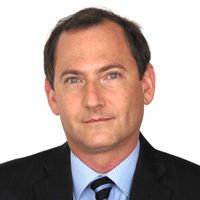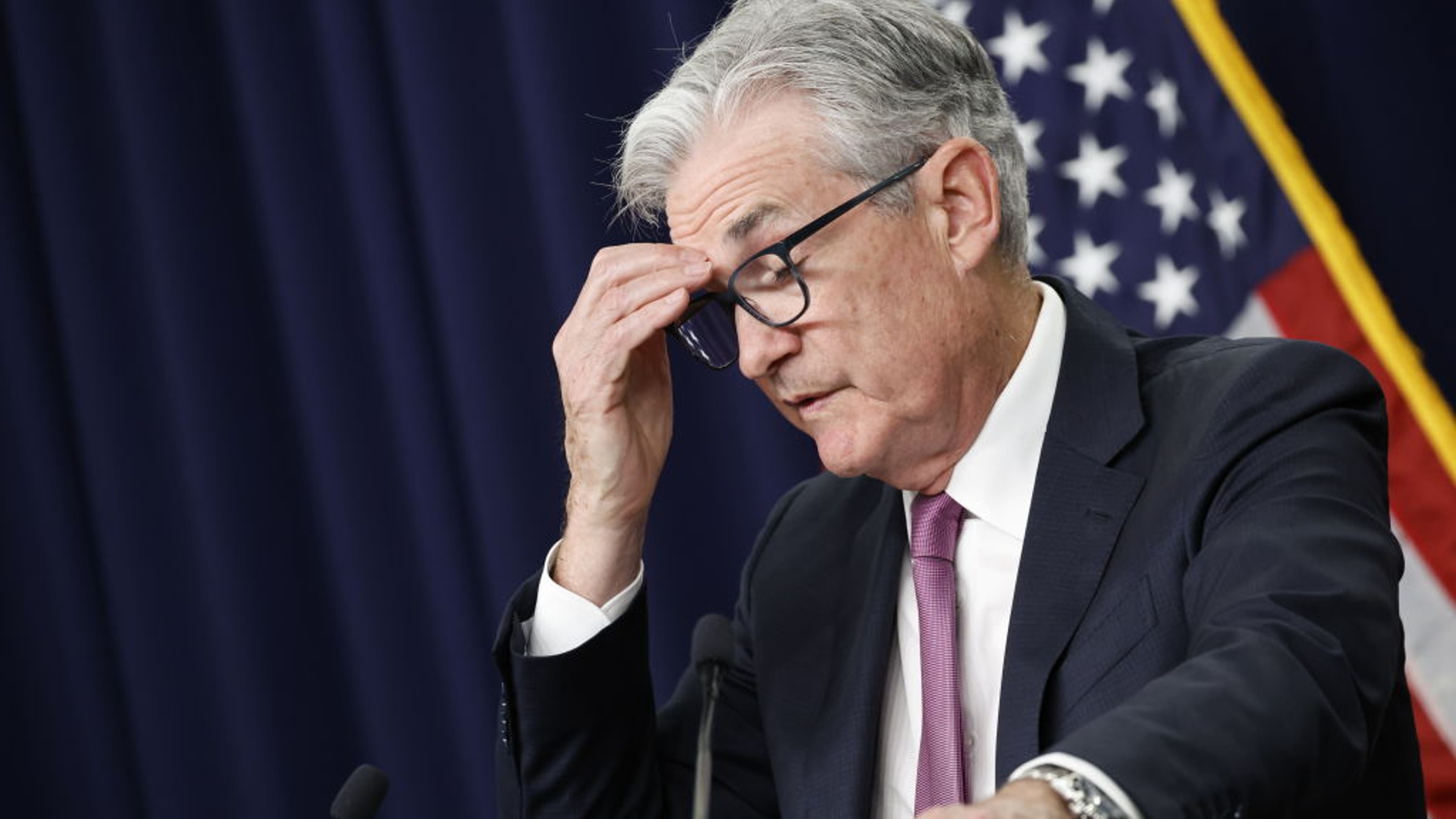Fed Holds Rates Steady, Pushes Back on Cuts: What the Experts Are Saying
The Fed is in no hurry to bring interest rates down from a 23-year high.


The Federal Reserve made the widely expected move of keeping interest rates unchanged when it wrapped up its regularly scheduled policy meeting Wednesday. And while the bank's rate-setting committee signaled that its campaign of rate hikes is over, it also pushed back on rate cuts coming as soon as the market might have liked.
The Federal Open Market Committee left the short-term federal funds rate steady at a 23-year high of 5.25% to 5.5%. But what market participants really want to know is when the Fed is going to begin easing.
Experts say the FOMC's policy statement and Fed Chief Jerome Powell's press conference were intended to cool down the market's rate-cut expectations. In that task, they succeeded. Interest rate traders now assign a 36% probability to the first quarter-point rate cut coming in March, down from 40% a day ago, according to CME Group's FedWatch Tool. Odds of the first cut happening in May rose to 59% from 54% yesterday.
From just $107.88 $24.99 for Kiplinger Personal Finance
Become a smarter, better informed investor. Subscribe from just $107.88 $24.99, plus get up to 4 Special Issues

Sign up for Kiplinger’s Free Newsletters
Profit and prosper with the best of expert advice on investing, taxes, retirement, personal finance and more - straight to your e-mail.
Profit and prosper with the best of expert advice - straight to your e-mail.
Experts note that a data-dependent Fed will see two jobs reports, consumer and producer price indexes, and personal-consumption expenditures info before it next meets in March.
With the FOMC's latest rate decision now a matter of record, we turned to economists, strategists, investment officers and other pros for their thoughts on what the move means for markets, macroeconomics and monetary policy going forward. Please see a selection of their commentary, sometimes edited for brevity or clarity, below.
Interest rates: the experts weigh in

"The FOMC left the target range for the federal funds rate unchanged at its January meeting. Only modest changes were made to the post-meeting statement's characterization of the current state of the economy. The statement was updated to acknowledge that the Committee believes that the risks to its employment and inflation goals are 'moving into better balance.' The FOMC removed the tightening bias from the statement, replacing the reference to 'the extent of any additional policy firming' with 'the Committee does not expect it will be appropriate to reduce the target range until it has gained greater confidence that inflation is moving sustainably toward 2%.'" – Jan Hatzius, chief economist at Goldman Sachs
"The Fed continued to hold rates steady today and left little clues to whether rate cuts will start March 20th or possibly May 1st. With inflation falling, economic growth showing resilience, and a stronger than expected labor market, the Fed must balance crimping economic activity by pushing off rate cuts and reigniting inflation by cutting rates too early. Their dilemma is evident via Fed Fund Futures that show a roughly 55% chance of cutting rates at the March meeting. The spoken words 'data dependent' by Fed Reserve members has probably never been more accurate in predicting their next move." – David Merrell, founder, managing member of TBH Advisors
"The resiliency of the economy gives the Fed cover to wait a bit longer to cut rates than the market is currently anticipating. I view today's statement as suggesting that the Fed will remain data dependent and that the first rate cut would not come before May of this year, in contrast to market expectations which currently place a 60% probability of the first rate cut occurring in March. This disconnect between the Fed narrative and market expectations will continue to cause volatility for risk assets in the near term." – Rajeev Sharma, managing director of fixed income at Key Private Bank
"In short, the door is open to rate cuts just as soon as the Fed is happy with the data. We think the inflation numbers before the March meeting will be favorable, so we still look for the first easing to come then, but it is a close call and a delay until May would be no surprise. A key argument for the delay is that the May meeting comes after the release of the Q1 employment costs index, which some of the more hawkish members might insist on seeing before they pull the trigger." – Ian Shepherdson, chief economist at Pantheon Macroeconomics
"The Fed did back away from their prior bias to further tightening as inflation has fallen notably over the past year. However, it is still above their target. They note that the Fed's goals on employment and inflation are moving into a better balance. The committee voiced their preference for more proof of inflation moving sustainably towards 2% before ensuing cuts, taking the odds for a March cut down (March rate cut odds dip back to ~40%). Powell did reiterate that most members of the committee see cuts happening this year, although likely these are pushed to later in the year where the Fed has more time to see inflation data continue to show improvement." – John Luke Tyner, portfolio manager at Aptus Capital Advisors
"The Fed remains on track for rate cuts in 2024, but the economy is too strong for telegraphing anything yet. We still have almost two months of data, plus Congressional testimony. Jerome Powell has no reason to show his hand at this point. Haste makes waste." – David Russell, global head of market strategy at TradeStation
"The FOMC removed policy tightening bias from its statement, confirming that growth and inflation risks are more balanced. However, the Fed also warned that it needed more evidence that inflation is moving towards 2%, before it can cut rates. The statement reduces the chances of a rate cut in March. We already see ample evidence of inflation and labor markets normalizing from pandemic-related shocks. The U.S. economy is settling back towards equilibrium of around 2% real GDP growth and 2% inflation. By gradually reducing the policy rate in small steps in response to falling core inflation, the Fed should be able to successfully normalize restrictive monetary policy settings. The start of this adjustment might be delayed by a month or two, but we are confident in the direction of travel." – Paul Mielczarski, head of global macro strategy at Brandywine Global
"As widely expected, no rate cut by the FOMC at this meeting. At 7:30 this morning Fed Funds futures were pricing a virtually 0% chance of a rate cut, and only a 45% chance of a cut at the March meeting. The first cut that was fully priced in was at the May meeting with a 77.5% chance of a move occurring. At 1:30, and after the dovish data on the Employment Cost Index that was released at 10:00, the chance of a March cut had risen to 56% and the chance of a May cut rose to 87.2%. There were several changes from the last official statement that was released with the decision. Though the Fed dropped their tightening bias, the statement leaned hawkish, as Powell et. al emphasized waiting for more confidence that inflation was continuing to proceed to their 2% goal (Core PCE). At 2:10, the chances of a March cut had fallen back to 48.4% and the chance of a May cut fell to 84.1%. The S&P 500 took the news harder than the Treasury market." – Michael Mullaney, director of global markets research at Boston Partners
"This meeting ultimately highlighted the art versus science of monetary policy as the risks have come further into balance for inflation and growth. While we have moved from really tight financial conditions to less tight, the policy is still restrictive, and a re-acceleration in inflation seems unlikely as wage growth continues to decelerate, as highlighted in the employment cost index today. We expect the Fed will see the necessary evidence needed to begin cutting interest rates this spring, likely in May. The benefit of starting sooner and moving gradually will ultimately outweigh waiting until later in the year and increasing the likelihood they get behind the curve or become a political football in an election year." – Timothy S. Chubb, chief investment officer at Girard, a Univest Wealth Division
"Chair Powell said the policy rate was probably at its 'peak' and that, 'at some point this year,' will likely be 'dialed back' from its 'restrictive level.' But the timing has yet to be determined. Importantly, he judged a March move was 'unlikely.' Powell mentioned the FOMC needs to see more of the 'good' inflation data they are now seeing (he mentioned it several times). Rate cuts are coming but 'later in the spring' is looking like the (potentially) earliest date." – Michael Gregory, deputy chief economist at BMO Capital Markets
"As anticipated, the Federal Reserve has shifted its stance from a hiking bias to a data-dependent approach. With steady economic growth, it is expected that policymakers will wait for more evidence of a sustained downtrend in inflation before making any changes. The market's expectation of a 50% probability of a rate cut by March seems reasonable, given the recent positive signals from the Fed's preferred measures of inflation and wage growth." – Whitney Watson, global co-head and co-chief investment officer of fixed income and liquidity solutions at Goldman Sachs Asset Management
Related Content
Profit and prosper with the best of Kiplinger's advice on investing, taxes, retirement, personal finance and much more. Delivered daily. Enter your email in the box and click Sign Me Up.

Dan Burrows is Kiplinger's senior investing writer, having joined the publication full time in 2016.
A long-time financial journalist, Dan is a veteran of MarketWatch, CBS MoneyWatch, SmartMoney, InvestorPlace, DailyFinance and other tier 1 national publications. He has written for The Wall Street Journal, Bloomberg and Consumer Reports and his stories have appeared in the New York Daily News, the San Jose Mercury News and Investor's Business Daily, among many other outlets. As a senior writer at AOL's DailyFinance, Dan reported market news from the floor of the New York Stock Exchange.
Once upon a time – before his days as a financial reporter and assistant financial editor at legendary fashion trade paper Women's Wear Daily – Dan worked for Spy magazine, scribbled away at Time Inc. and contributed to Maxim magazine back when lad mags were a thing. He's also written for Esquire magazine's Dubious Achievements Awards.
In his current role at Kiplinger, Dan writes about markets and macroeconomics.
Dan holds a bachelor's degree from Oberlin College and a master's degree from Columbia University.
Disclosure: Dan does not trade individual stocks or securities. He is eternally long the U.S equity market, primarily through tax-advantaged accounts.
-
 Your Guide to Buying Art Online
Your Guide to Buying Art OnlineFrom virtual galleries to social media platforms, the internet offers plenty of places to shop for paintings, sculptures and other artwork without breaking the bank.
-
 Samsung Galaxy S25 Ultra for $4.99 a Month: A Closer Look at Verizon’s Deal
Samsung Galaxy S25 Ultra for $4.99 a Month: A Closer Look at Verizon’s DealVerizon’s aggressive pricing makes Samsung’s top-tier phone tempting, but the real cost depends on your plan and how long you stay.
-
 I'm 59 with $1.7 million saved and lost my job. Should I retire?
I'm 59 with $1.7 million saved and lost my job. Should I retire?We asked professional wealth planners for advice.